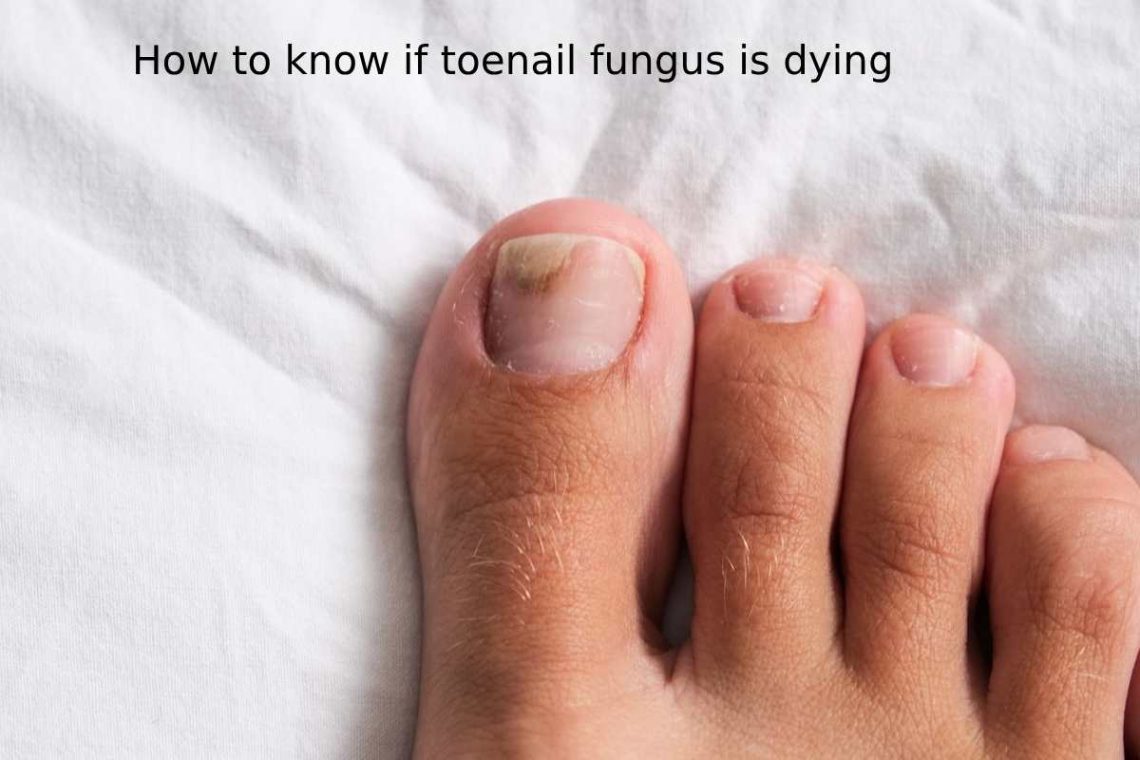Are you wondering, “How do you know if toenail fungus is dying?” and are you curious about the signs of healing? This article explores the indicators that your toenail fungus is improving.
Why does toenail fungus appear? Is it just an aesthetic problem, or can it affect your health? What treatments exist to eliminate it?
We are dedicating this entire article to answering these questions. How do you know if toenail fungus is dying? It affects more than 12 percent of the population.
Signs that your toenail fungus is getting better include
Reduced discoloration: The nail starts to look less yellow or brown.
Normal nail texture: The nail feels and looks smoother, not thick or brittle.
Healthy nail growth: New, clear nails grow from the base.
If you have toenail fungus, do not hesitate to contact podiatrist.
Why do toenail fungus appear?
- First of all. If you detect a fungus, remedy it immediately. Don’t let it go.
The fungus starts with a small white mark on the tip of the nail but spreads. - Fungus on the nail of the big toe is much more common. That said, the most common causes of fungus appearance are:
- Do not dry your feet well after bathing or showering. That is, the fungi appear because you have not dried yourself well and you have excess moisture.
- Infections from going barefoot, especially when you don’t wear flip-flops in changing rooms at gyms or swimming pools.
- Because your feet sweat too much.
- Due to a blow, for example, when you are barefoot in your house and hit the leg of the bed.
- Inadequate footwear is also the cause of nail fungus.
- Age. They appear due to a lack of blood circulation due to chronic diseases such as diabetes. Older people are more likely to have nail fungus.
Symptoms of Nail Fungus
- Whitish or yellowish nails
- Increased thickness of the nail
- More dull, brittle, and brittle nails
- Nail that comes off easily from the skin
- Nail deformities
- Alteration in the texture of the nail
- The presence of a kind of mass under the nail
- Bad smell
Types of Nail Fungus
- Distal Subungual Nail Mycosis
- Proximal Subungual Nail Mycosis
- White Superficial Nail Mycosis
- Candidiasis on the Nail
- Endonyx Nail Mycosis
- Total Dystrophic Nail Mycosis
Phases of nail fungus
- As we have pointed out, it begins with a white spot. Sometimes, this stain is yellow with brown tones.
- It is located at the tip of the toenail. They can also appear on the fingernails.
- If you do not remedy it immediately, the infection will progress.
- First, this stain becomes discolored, then thicker, and the edge of the nail deteriorates.
- The fungus can affect many nails. Sometimes, the fungus goes unnoticed and doesn’t bother you.
- But in many other cases, it is a painful process. In any case, it is much better to seek the opinion of professionals.
- A severe case of nail fungus can be painful and cause permanent damage to the nails. The infection could also spread to other areas of the body, especially in people with a weakened immune system due to diabetes or other causes.
How to get rid of toenail fungus
- In this section, we do not have excellent news because fungal infections usually take a while to disappear.
- You can indeed read hundreds of home remedies, but there is no medical evidence that they are effective.
- It is best to see a specialist because fungus can have multiple causes and must be treated differently depending on whether the patient has other diseases or is taking certain medications. Age also plays a role.
Treatment and tips to prevent toenail fungus
The best way to treat toenail fungus is prevention. Here are some tips:
- It would help if you always kept your toenails – and your fingernails, too – clean and dry. It is very important to wash after touching an infected nail. Then, dry your nails thoroughly and moisturize them. Talcum powder is a good solution.
- Nails should always be well cut. When you do this, make sure that the nails are straight. Fungus proliferates on long nails. Disinfecting the nail clippers before using them is also a good idea.
- If you are prone to fungus, change your socks regularly.
- Always wear quality shoes. Don’t wear old shoes. It’s not good for children to wear inherited shoes, even if they belong to their siblings.
- Wear flip-flops in locker rooms, gyms, and other public spaces.
- In short, toenail fungus is a common problem affecting aesthetics and health. It can arise due to poor hygiene, humidity, injuries, or inappropriate footwear, so it is important to treat it promptly to avoid complications.
- Treating nail fungus can take time, and it is best to seek help from a podiatrist, as home remedies have no solid medical backing. Prevention is crucial, including keeping nails clean and dry, cutting them properly, changing socks regularly, and taking precautions in public spaces.
Care During Treatment
- Avoid Wearing Tight Shoes
- Use of Cotton Socks
- Proper Foot Hygiene
- Wearing Sandals in Public Areas
- Using Personal Manicure/Pedicure Tools
Conclusion
How to know if toenail fungus is dying involves observing key signs such as reduced discoloration, the nail texture returning to normal, and fresh, healthy nail growth. If you notice these improvements, it indicates that the treatment is working.
With proper treatment and preventative measures, it is possible to eliminate nail fungus and ultimately maintain foot health. If you suffer from this condition, do not hesitate to make an appointment for an initial evaluation.

